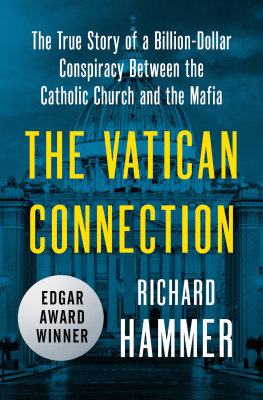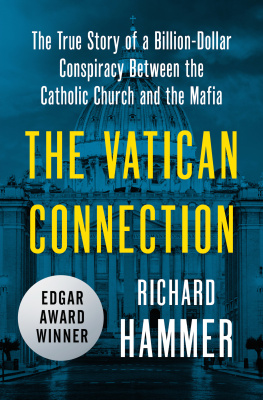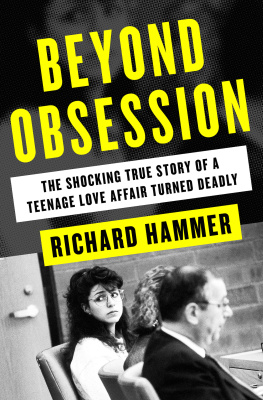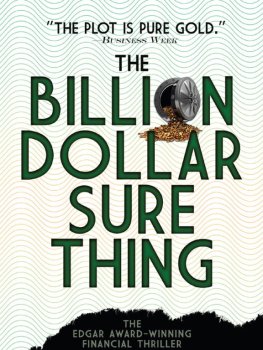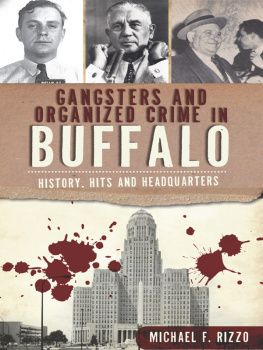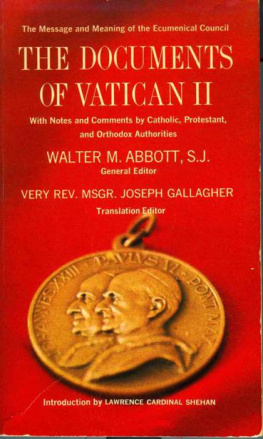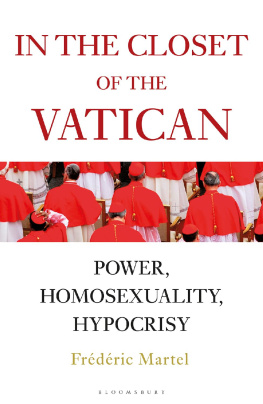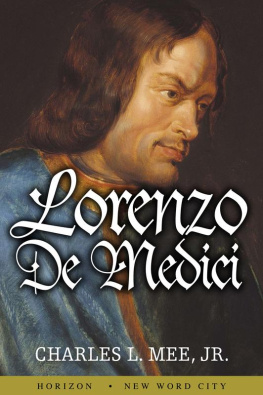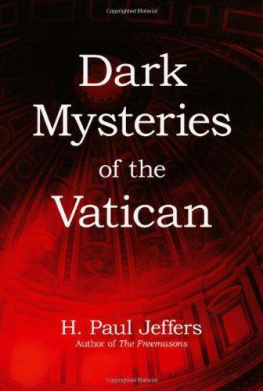The Vatican Connection
Richard Hammer

It was without a compeer among swindles. It was perfect, it was rounded, symmetrical, complete, colossal.
Mark Twain,
Life on the Mississippi
Authors Note
The events described in this book are true and the characters are real. Except for certain interpretations and conclusions, which are the authors responsibility alone, the story is based on the recollections, files and records of Detective Sergeant Joseph J. Coffey, Jr., commanding officer of the Organized Crime Homicide Task Force and special assistant for organized crime affairs to the Chief of Detectives of the New York City Police Department.
It also relies heavily on wiretaps and electronic surveillance done under court order in the United States and the Federal Republic of Germany, and on reports, files, records and documents of the New York City Police Department, the New York County (Manhattan) District Attorneys Office, the Federal Bureau of Investigation, the United States Department of Justice and its Organized Crime Strike Force in New York and elsewhere in the United States, other government agencies, subcommittees of the United States Congress, Interpol, the Munich Criminal Police and other investigative bodies in the Federal Republic of Germany and elsewhere in Europe, court proceedings, and the recollections and statements of certain of the participants in these events.
Those conversations that have been re-created are either taken directly from transcripts of legal wiretaps and electronic eavesdropping devices or are based on the recollections of one or more of the participants in them.
R. H .
New York, February 1982
Munich, May 1972
Matteo de Lorenzo was in a mellow and nostalgic mood. It was late on a warm spring night and he had spent the evening on the town. His aide and traveling companion, Vincent Rizzo, had shown him the sights of Munich and together they had toured the best of the Bavarian capitals night spots, had perhaps eaten a little too much heavy German food, had washed it down with a little too much good liquor. By midnight, back in their suite at the Bayerischer Hof Hotel, they were flushed with the glow of satiety, and with the anticipation of great financial success.
They paused for a nightcap and then went to bed. Despite the fatigue, sleep did not come easily. All that good food and liquor, combined with jet lag, sat heavily on the stomach and frayed the nerves. And, at least for Marty de Lorenzo, there was a trace of homesickness. He was far from his modest house in Bayside, Queens, and at sixty-one, like many men his age, he found it hard to adapt to radical change, had grown accustomed to a regular routine. His normal orbit did not usually include an expensive suite in a deluxe European hotel. A short, somewhat overweight man, looking older than his years, with a round, open and often smiling face, he would have seemed more at home behind the counter in a small neighborhood grocery, surrounded by a dozen grandchildren for whom he would always have had an inexhaustible supply of pennies and candy, and by a group of old cronies with whom hed be trading an inexhaustible repertoire of tall stories during idle hours.
To pass those hours that night in a strange bed in an unfamiliar city until sleep came, he mused softly into the darkness, talked reflectively across the night table that separated his bed from Rizzos. He talked about the past, about how things had been in the old days when he had been young and ambitious. It was a monologue, broken now and then by some drowsy comment from Rizzo to indicate that he was still awake and listening.
Its always been a tough world to make money, de Lorenzo summed up in those final moments before drifting into sleep. Things has to get better and, you see, we are using our heads. We started using our brains a little. Of course, a lot of people never had the brains to use, so they But some of us There was bootlegging, right. Then from bootlegging, we went into numbers; numbers to horses. But you had to have a brain to go with it. It goes from one thing to the other. Then into shylocking. Then legitimate business. That means it took us a long time to realize that legitimate business is the best thing. When I got into legitimate business, it was stocks.
Marty de Lorenzo was, indeed, into stocks and bonds, and a lot of other things, too. Vincent Rizzo was overseer of many of those de Lorenzo interests. He was the man who had put the portfolio together and was charged with its safekeeping, with making it produce ever-increasing profits. It was a portfolio that might have been the envy of any investor, of even the sharpest Wall Street trader. It was worth close to a billion dollars and it was filled with such choice blue-chip investments as United States Treasury bills, bonds and notes, bonds of the Federal Intermediate Credit Bank and the Federal National Mortgage Association, common stock and bonds in major corporations such as National Aviation Company, Unishops, Inc., General Portland Cement Company, International Business Machines, Beneficial Finance Company, California Computer Corporation, First Union, Inc., Capital Holding Corporation, Coca-Cola Bottling Company of Los Angeles, Occidental Petroleum Corporation, Norton Simon, Inc., Chrysler Corporation, Pan American World Airways, Inc., American Telephone and Telegraph Company, General Electric Corporation and more.
There was just one trouble. De Lorenzo and Rizzo were neither ordinary investors nor sharp speculators. They did not watch the ticker tape, calculating whether to buy or sell or hold on the movements of fractions of a point. They had only a cursory interest in what happened to the price of their shares on the stock markets. Their definition of stock trading and legitimate business was unique to them, could be found in no dictionary unless it was one they wrote themselves. They had not bought their stocks and bonds, notes and bills in the ordinary manner, through brokerage houses or from banks. They had accumulated them from the mail sacks of the United States Postal Service, from private homes, from the vaults of such major banks and brokerage houses as Manufacturers Hanover Trust Company, Bankers Trust Company, Security Pacific Bank, Continental Illinois Trust Company, Blair and Company, Shearson Hammill, Merrill, Lynch, Pierce, Fenner and Smith, and a lot of others, and from the private engravings and printing presses of their friends, allies and employees. They had never paid the going market price for a single share in their portfolio; if they had paid anything at all, it had never been more than a fraction of the market value.
What de Lorenzo and Rizzo were, in fact, were major figures in the world of organized crimemen respected and honored by those at the very top, and held in awe, and no little fear, by those below. They owed their positions not so much to the use of the traditional muscle and force, though they were not afraid to use violence when they thought it necessary (indeed, Rizzo thought it necessary more often than not), but more to the fact that they were prime earners. They had the instinct to smell where the main chances lay and seize them. They knew how to take a dollar and turn it into ten or more, and so enrich themselves and their organization. They had their hands in everything. They were the men who controlled the distribution of stolen and counterfeit American securities throughout the world. And that was what had brought them to Munich that spring night.

